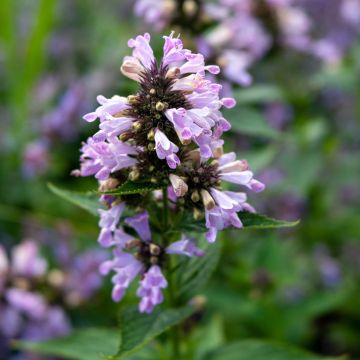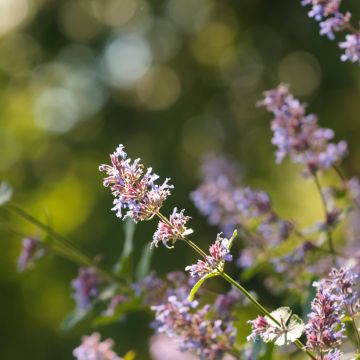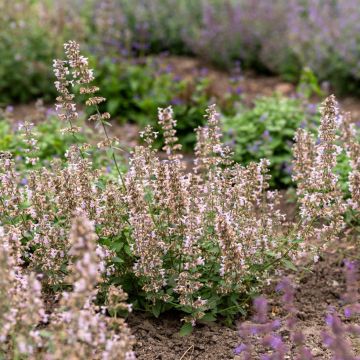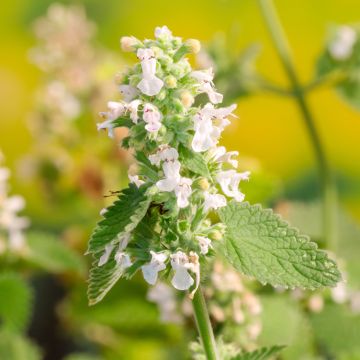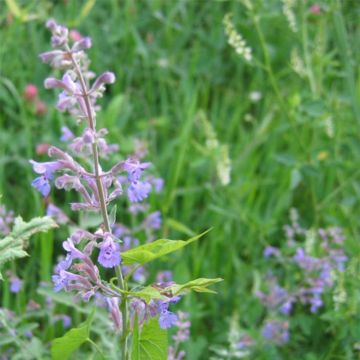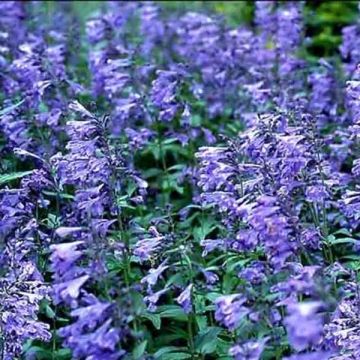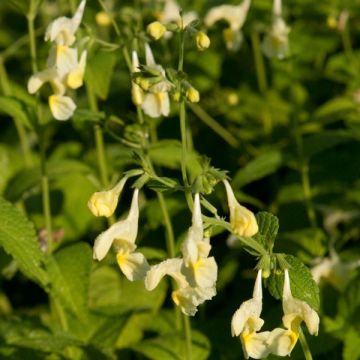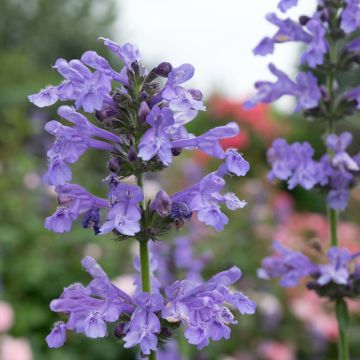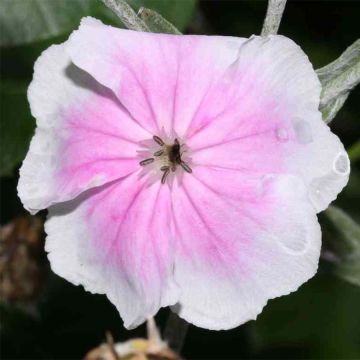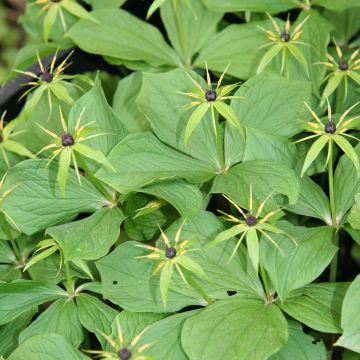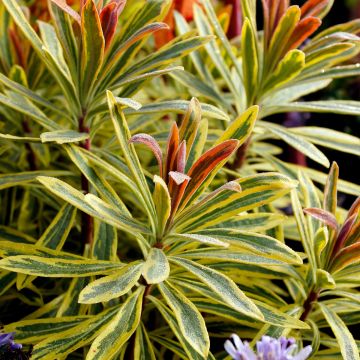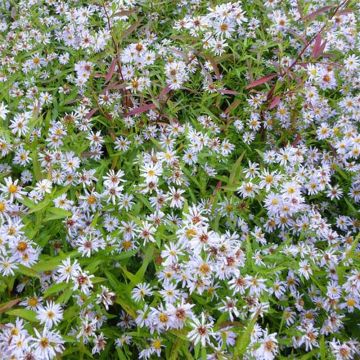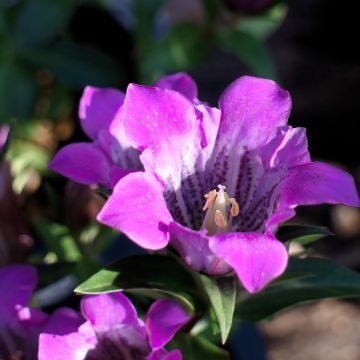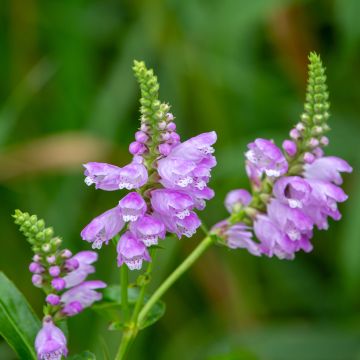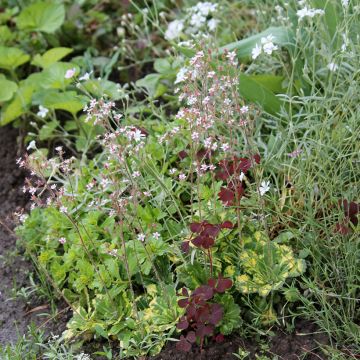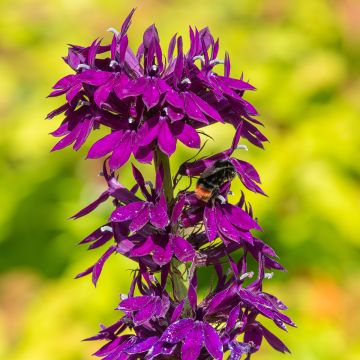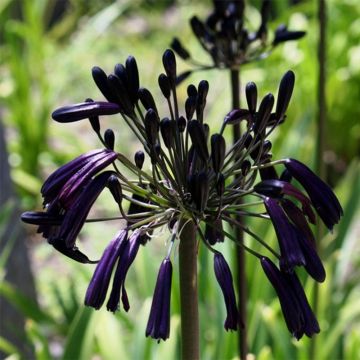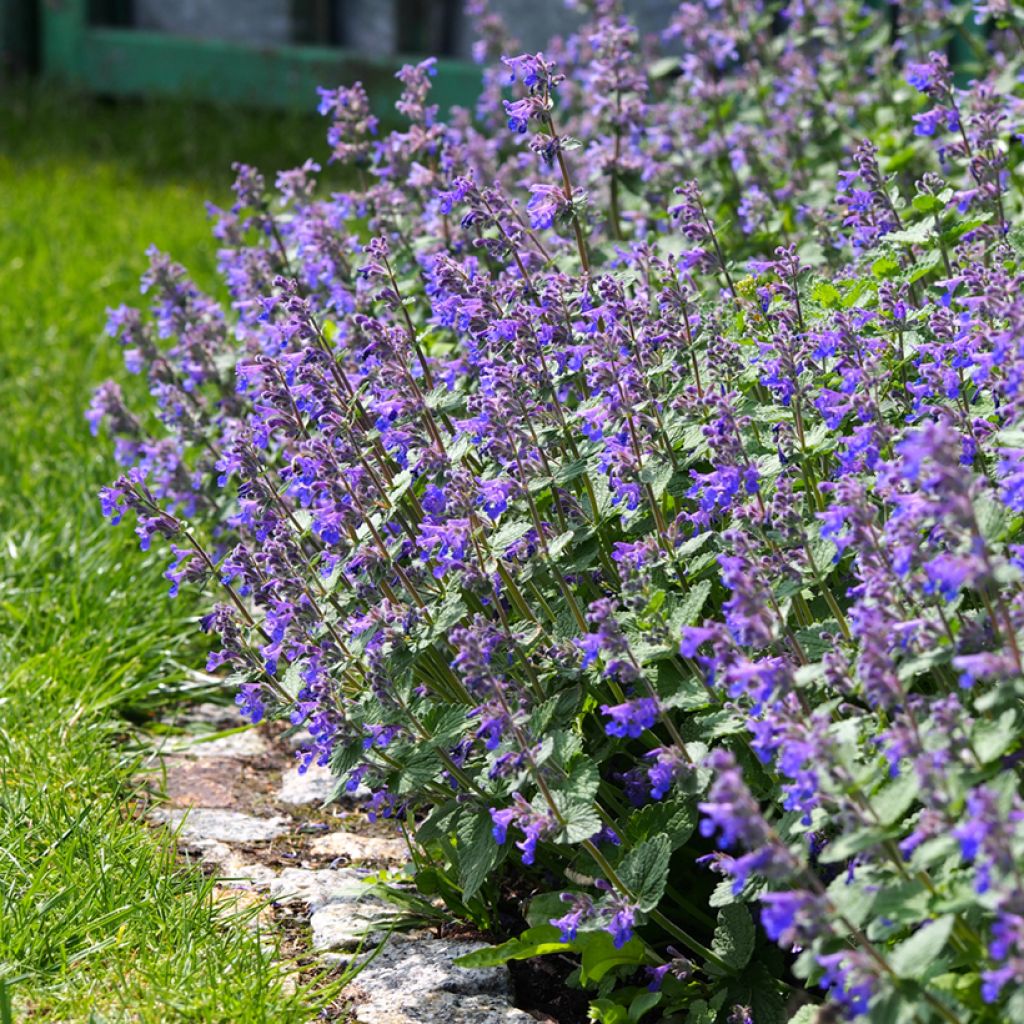

Nepeta faassenii - Catnip
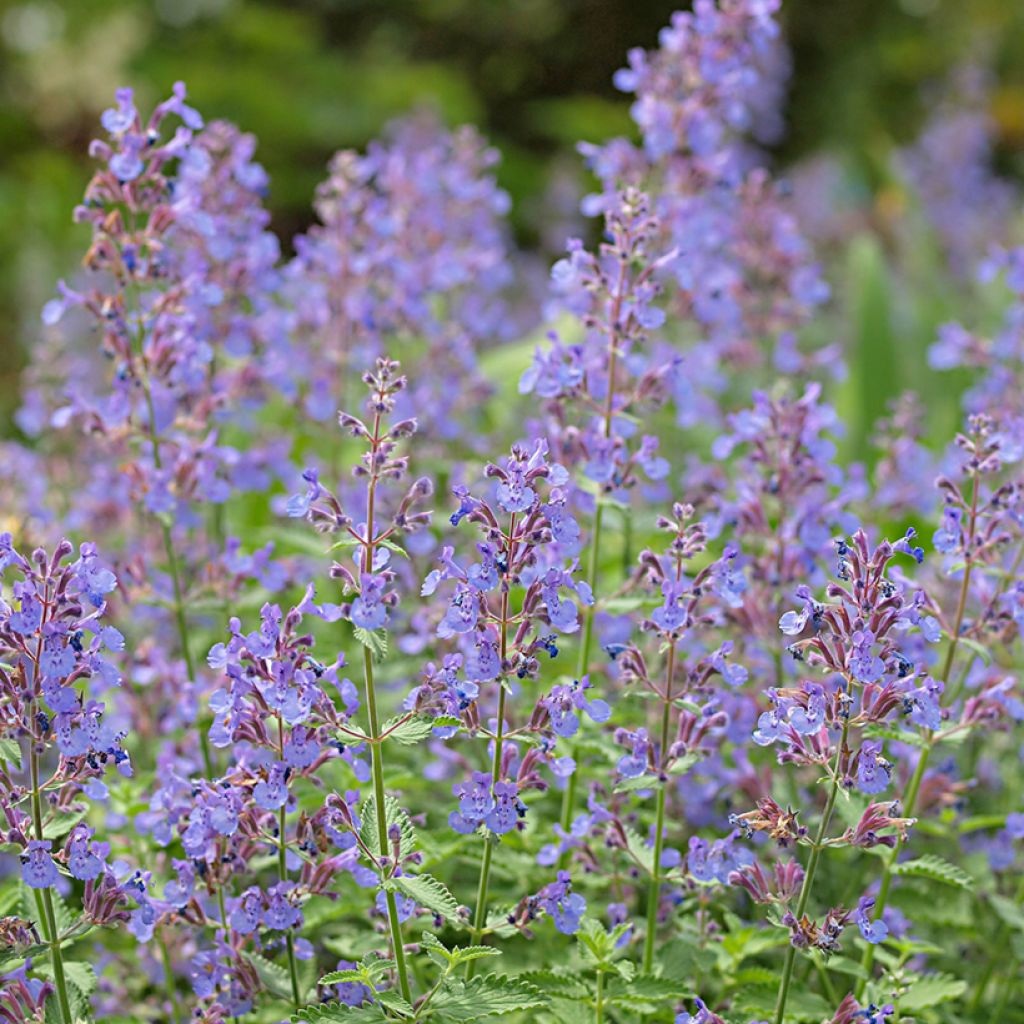

Nepeta faassenii - Catnip
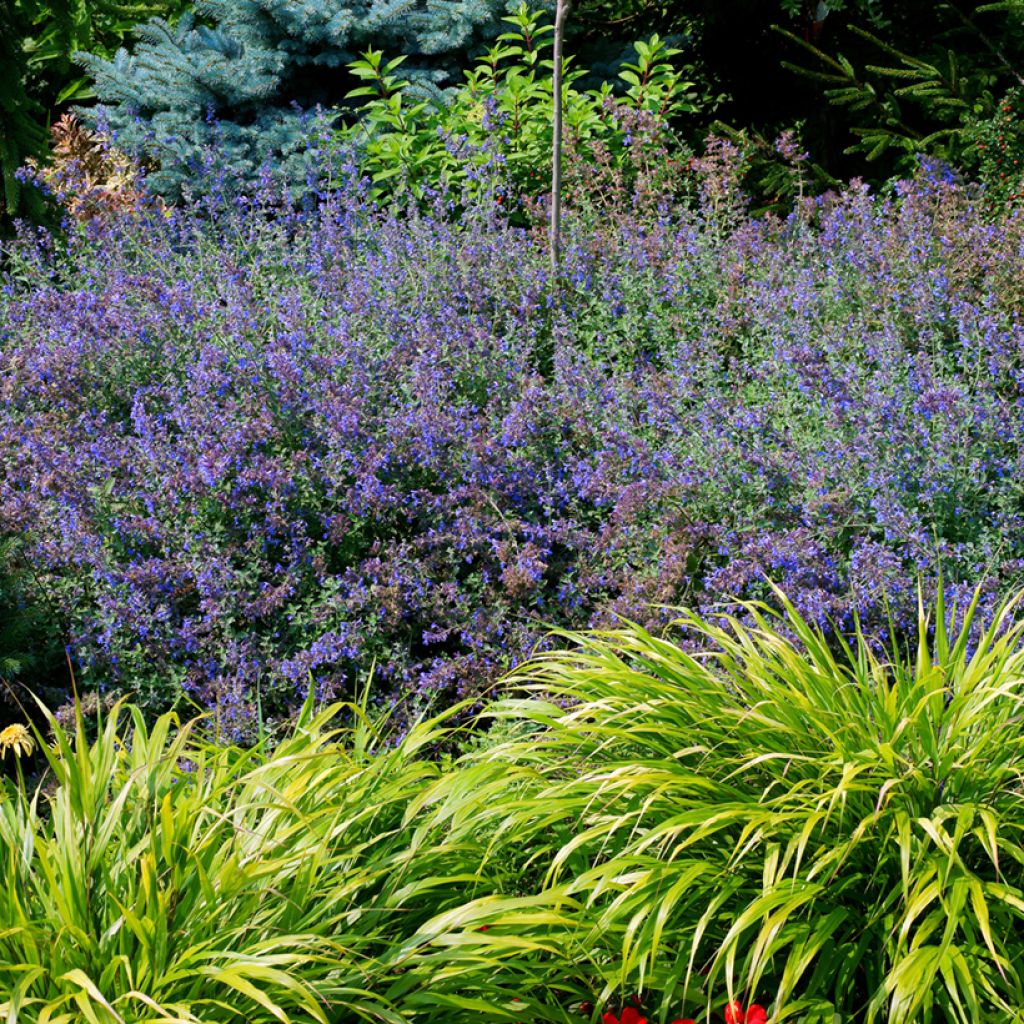

Nepeta faassenii - Catnip
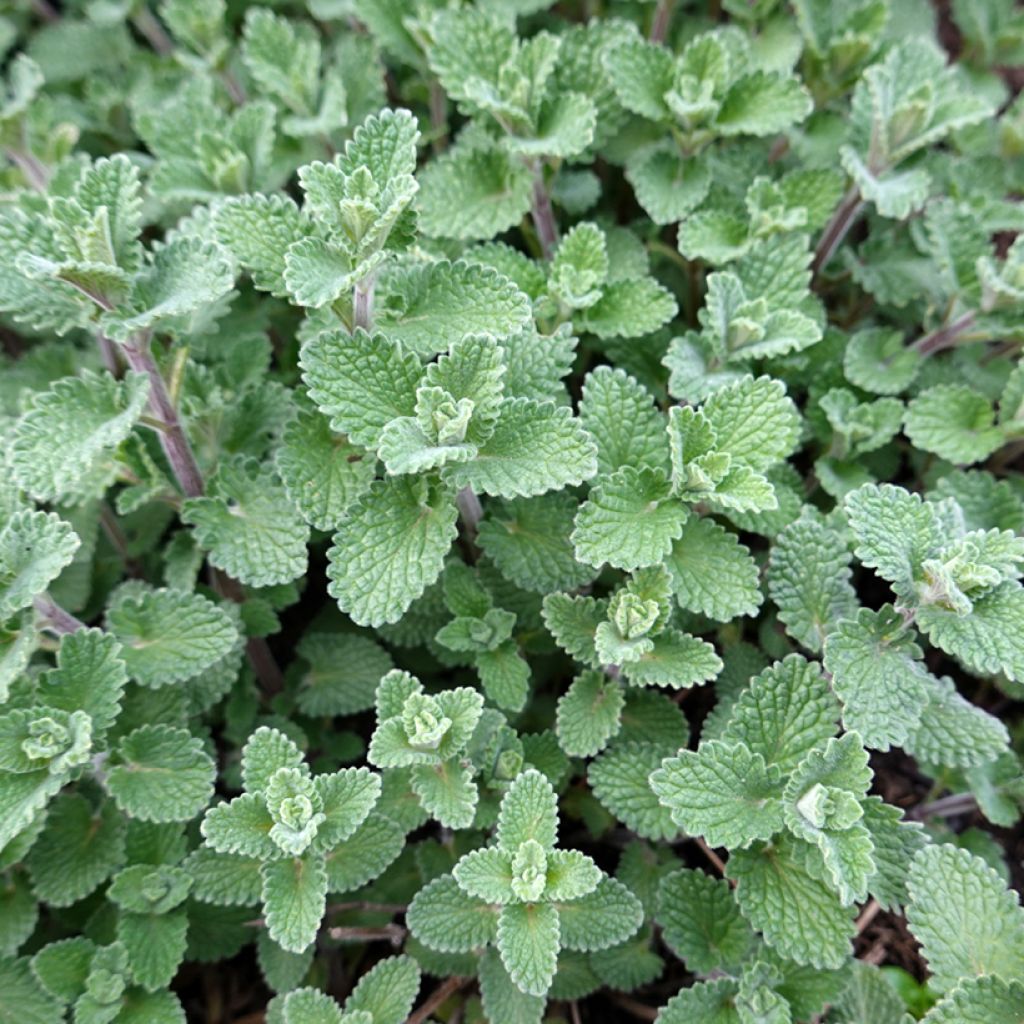

Nepeta faassenii - Catnip
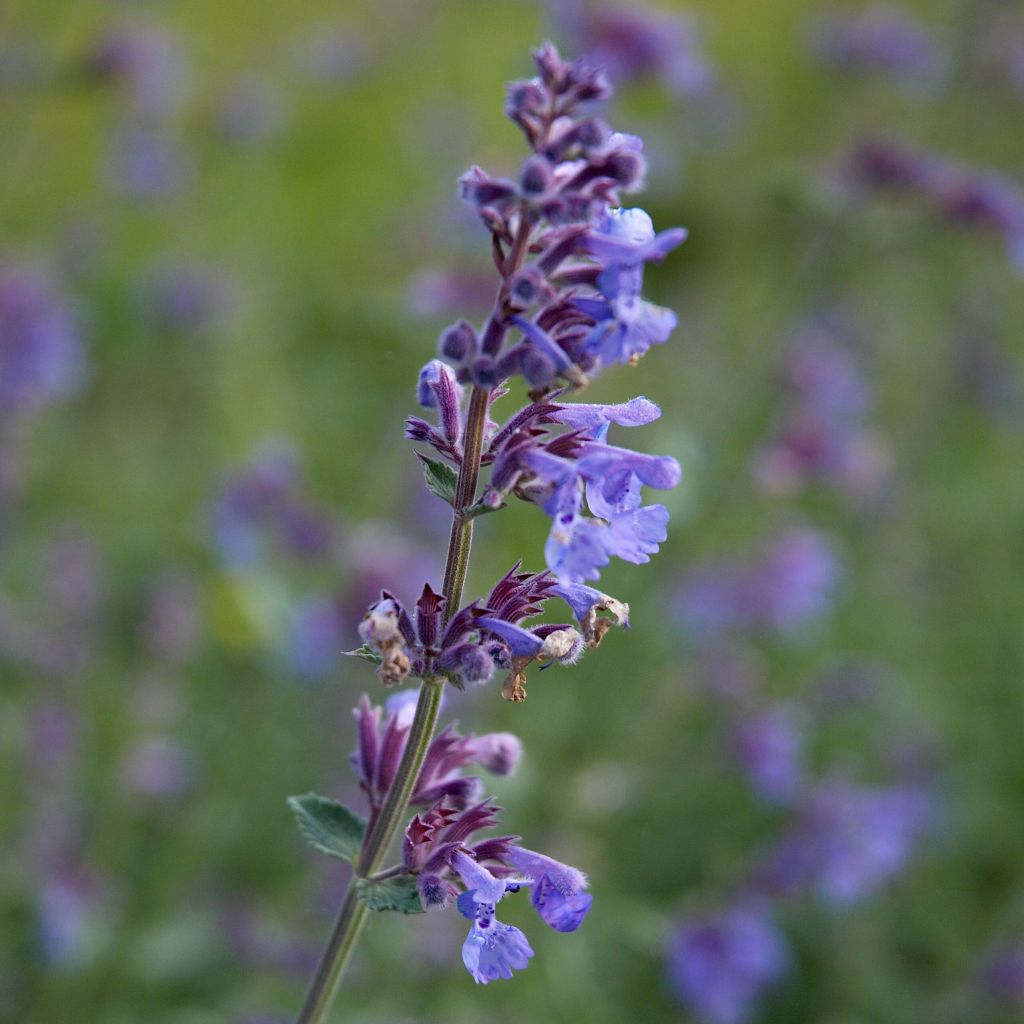

Nepeta faassenii - Catnip
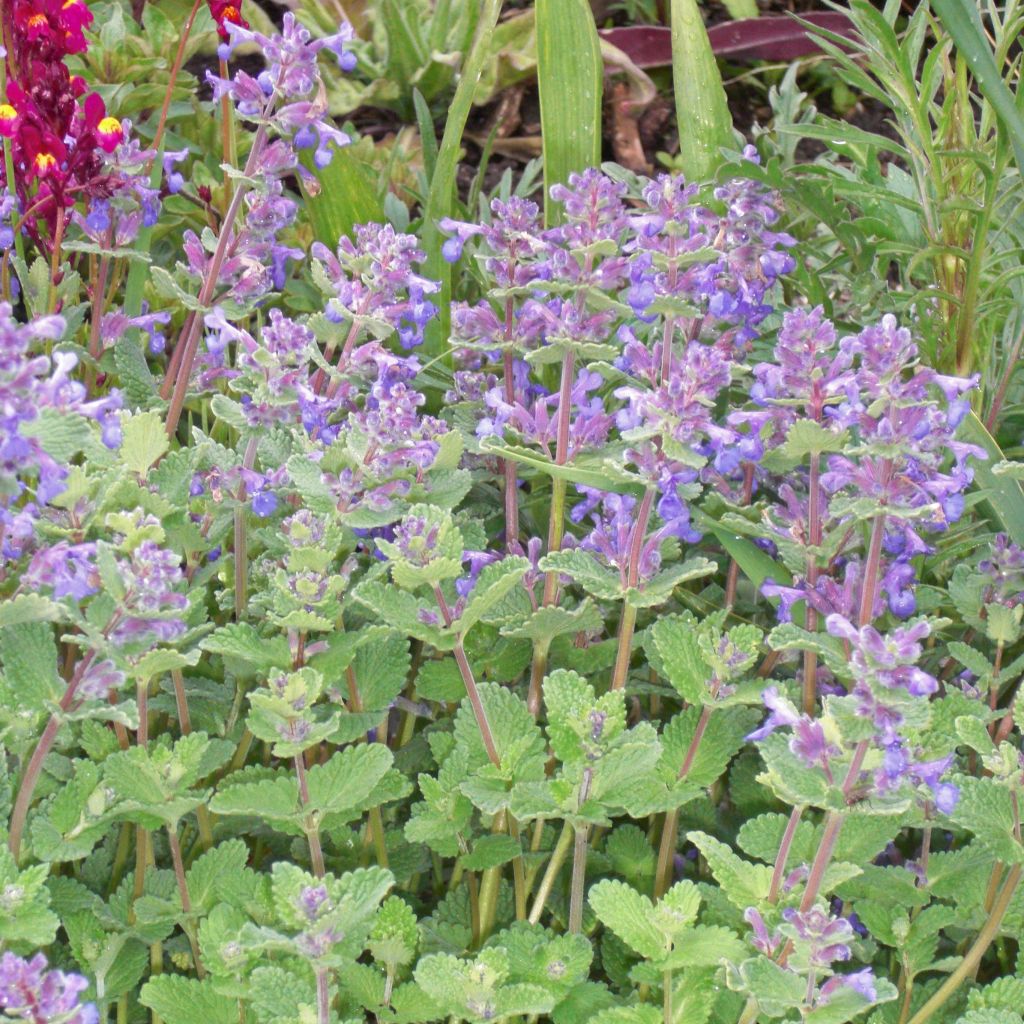

Nepeta faassenii - Catnip
Nepeta faassenii - Catnip
Nepeta x faassenii
Faassen's catnip, Catmint
This item cannot be shipped to the selected country
Delivery charge from €5.90
Delivery charge from €5.90
More information
Schedule delivery date,
and select date in basket
This plant carries a 12 months recovery warranty
More information
We guarantee the quality of our plants for a full growing cycle, and will replace at our expense any plant that fails to recover under normal climatic and planting conditions.
From €5.90 for pickup delivery and €6.90 for home delivery
Express home delivery from €8.90.
From €5.90 for pickup delivery and €6.90 for home delivery
Express home delivery from €8.90.

Does this plant fit my garden?
Set up your Plantfit profile →
Description
Nepeta x fassenii is an undemanding hardy perennial, with endless flowers from May to October as long as its faded flowers are pruned in summer and the soil is not too dry. It produces slender floral stems covered in small blue-violet flowers and emerging from a cushion of small silver-green leaves. A gift for difficult and poor soils, this nepeta will grow in any well-drained soil. It is suitable for all styles of gardens and combines perfectly with old or English roses.
Nepeta x faassenii, the plant that cats love, is a perennial belonging to the Lamiaceae family, resulting from the cross-breeding of N. racemosa and N. nepetella, native to central and southern Europe. This horticultural creation has given rise to many interesting varieties for gardens. It is a bushy and branched perennial, with a compact and spreading habit, forming a beautiful clump 35-40 cm (14-16in) in flower, occupying 40-50 cm (16-20in) of ground. The foliage is deciduous to semi-evergreen. In spring, it forms a cushion of with small velvety silver-green leaves, which release a curious scent when crushed. It blooms from June (sometimes earlier in favourable climates) to October, with a short resting period in summer drought. It is covered with many long and flexible spikes adorned with tiny blue-violet flowers and purple velvety bracts which are loved by pollinators. If faded flowers are removed, it regrows with fresh, dense foliage flowers.
Beautiful foliage, generous flowering, and a compact habit make Nepeta x fassenii an essential plant for any garden or flower pot, even in dry conditions. It is stunning in rockeries or on walls, where it covers them with silvery foliage and a carpet of violet flowers, just like aubrietas or wall bellflowers. It appreciates moist soils but can adapt to summer drought by reducing its flowering. Its uses are versatile, to border a path or walkway, to fill the base of bush roses, or in wild-looking borders alongside Sanguisorba menziesii, Pennisetum alopecuroides, Gaura lindheimeri, and Sedum 'Matrona', or in a mixed border to contrast with the yellow blooms of Achillea 'Terracotta', Alchemilla mollis, and Euphorbia characias. It can also be planted in beautiful flower pots on the terrace or balcony.
Report an error about the product description
Nepeta faassenii - Catnip in pictures
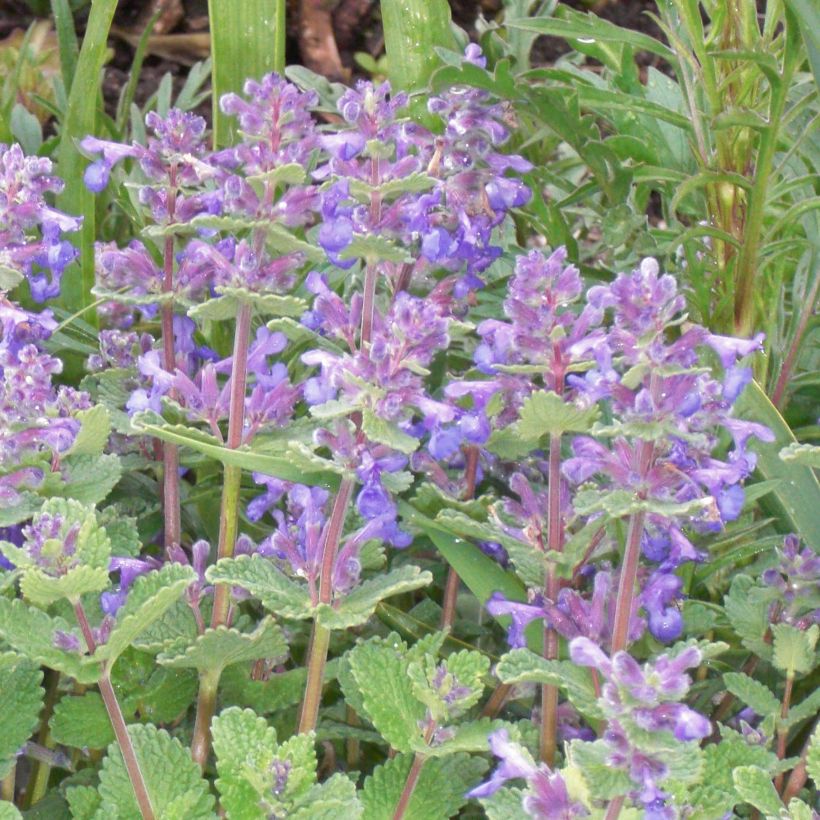

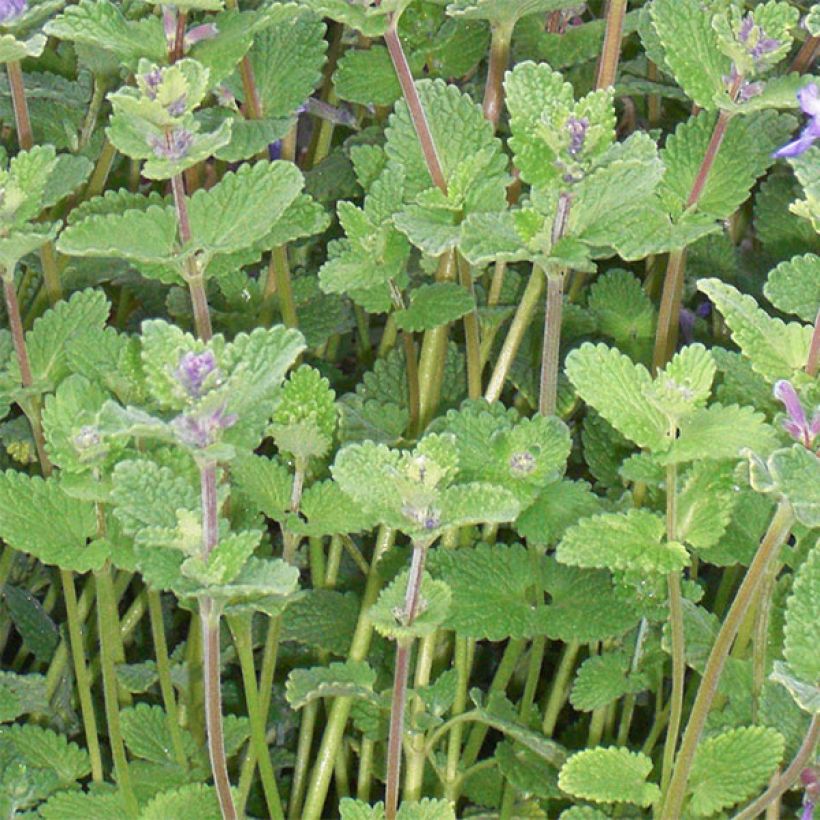

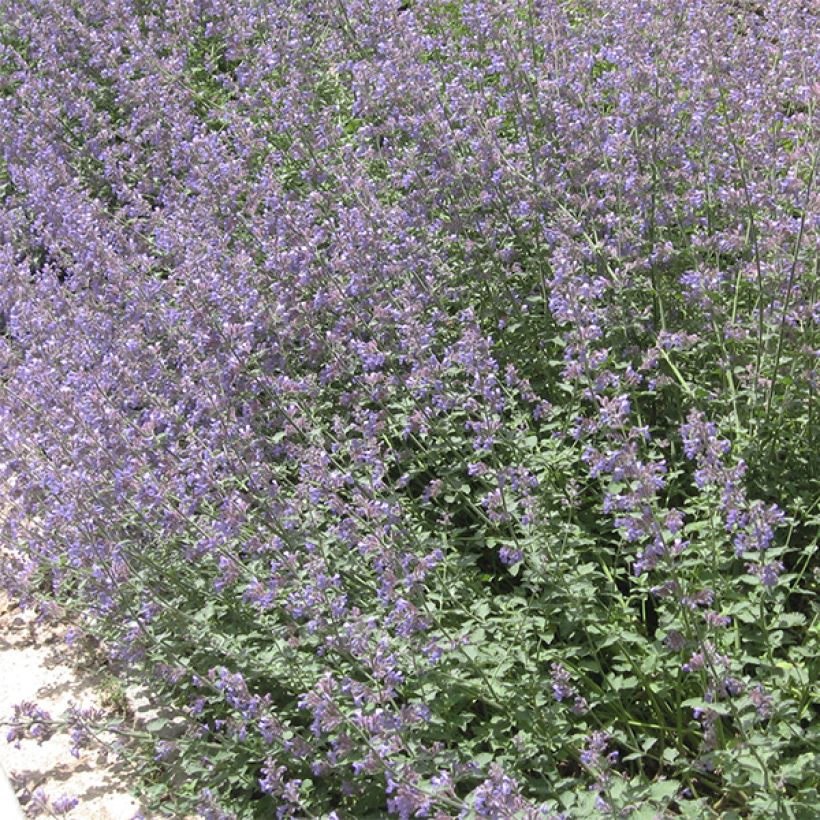

Flowering
Foliage
Plant habit
Botanical data
Nepeta
x faassenii
Lamiaceae
Faassen's catnip, Catmint
Cultivar or hybrid
Other Nepeta - Catnip
Planting and care
Nepeta prefers light, well-drained soils, even poor, limestone and stony. Though very hardy, it can die in winter in waterlogged soil. In heavy soil plant this nepeta in a rockery, above a wall or in a raised bed with well-draining soil enriched, in full sun.
Dig a hole 3 times larger than the volume of the pot and mix with your topsoil 1/3 gravel and 1/3 sand to lighten heavy soil and avoid waterlogging in winter.
Planting period
Intended location
Care
-
, onOrder confirmed
Reply from on Promesse de fleurs
Summer flowering perennials
Haven't found what you were looking for?
Hardiness is the lowest winter temperature a plant can endure without suffering serious damage or even dying. However, hardiness is affected by location (a sheltered area, such as a patio), protection (winter cover) and soil type (hardiness is improved by well-drained soil).

Photo Sharing Terms & Conditions
In order to encourage gardeners to interact and share their experiences, Promesse de fleurs offers various media enabling content to be uploaded onto its Site - in particular via the ‘Photo sharing’ module.
The User agrees to refrain from:
- Posting any content that is illegal, prejudicial, insulting, racist, inciteful to hatred, revisionist, contrary to public decency, that infringes on privacy or on the privacy rights of third parties, in particular the publicity rights of persons and goods, intellectual property rights, or the right to privacy.
- Submitting content on behalf of a third party;
- Impersonate the identity of a third party and/or publish any personal information about a third party;
In general, the User undertakes to refrain from any unethical behaviour.
All Content (in particular text, comments, files, images, photos, videos, creative works, etc.), which may be subject to property or intellectual property rights, image or other private rights, shall remain the property of the User, subject to the limited rights granted by the terms of the licence granted by Promesse de fleurs as stated below. Users are at liberty to publish or not to publish such Content on the Site, notably via the ‘Photo Sharing’ facility, and accept that this Content shall be made public and freely accessible, notably on the Internet.
Users further acknowledge, undertake to have ,and guarantee that they hold all necessary rights and permissions to publish such material on the Site, in particular with regard to the legislation in force pertaining to any privacy, property, intellectual property, image, or contractual rights, or rights of any other nature. By publishing such Content on the Site, Users acknowledge accepting full liability as publishers of the Content within the meaning of the law, and grant Promesse de fleurs, free of charge, an inclusive, worldwide licence for the said Content for the entire duration of its publication, including all reproduction, representation, up/downloading, displaying, performing, transmission, and storage rights.
Users also grant permission for their name to be linked to the Content and accept that this link may not always be made available.
By engaging in posting material, Users consent to their Content becoming automatically accessible on the Internet, in particular on other sites and/or blogs and/or web pages of the Promesse de fleurs site, including in particular social pages and the Promesse de fleurs catalogue.
Users may secure the removal of entrusted content free of charge by issuing a simple request via our contact form.
The flowering period indicated on our website applies to countries and regions located in USDA zone 8 (France, the United Kingdom, Ireland, the Netherlands, etc.)
It will vary according to where you live:
- In zones 9 to 10 (Italy, Spain, Greece, etc.), flowering will occur about 2 to 4 weeks earlier.
- In zones 6 to 7 (Germany, Poland, Slovenia, and lower mountainous regions), flowering will be delayed by 2 to 3 weeks.
- In zone 5 (Central Europe, Scandinavia), blooming will be delayed by 3 to 5 weeks.
In temperate climates, pruning of spring-flowering shrubs (forsythia, spireas, etc.) should be done just after flowering.
Pruning of summer-flowering shrubs (Indian Lilac, Perovskia, etc.) can be done in winter or spring.
In cold regions as well as with frost-sensitive plants, avoid pruning too early when severe frosts may still occur.
The planting period indicated on our website applies to countries and regions located in USDA zone 8 (France, United Kingdom, Ireland, Netherlands).
It will vary according to where you live:
- In Mediterranean zones (Marseille, Madrid, Milan, etc.), autumn and winter are the best planting periods.
- In continental zones (Strasbourg, Munich, Vienna, etc.), delay planting by 2 to 3 weeks in spring and bring it forward by 2 to 4 weeks in autumn.
- In mountainous regions (the Alps, Pyrenees, Carpathians, etc.), it is best to plant in late spring (May-June) or late summer (August-September).
The harvesting period indicated on our website applies to countries and regions in USDA zone 8 (France, England, Ireland, the Netherlands).
In colder areas (Scandinavia, Poland, Austria...) fruit and vegetable harvests are likely to be delayed by 3-4 weeks.
In warmer areas (Italy, Spain, Greece, etc.), harvesting will probably take place earlier, depending on weather conditions.
The sowing periods indicated on our website apply to countries and regions within USDA Zone 8 (France, UK, Ireland, Netherlands).
In colder areas (Scandinavia, Poland, Austria...), delay any outdoor sowing by 3-4 weeks, or sow under glass.
In warmer climes (Italy, Spain, Greece, etc.), bring outdoor sowing forward by a few weeks.

































